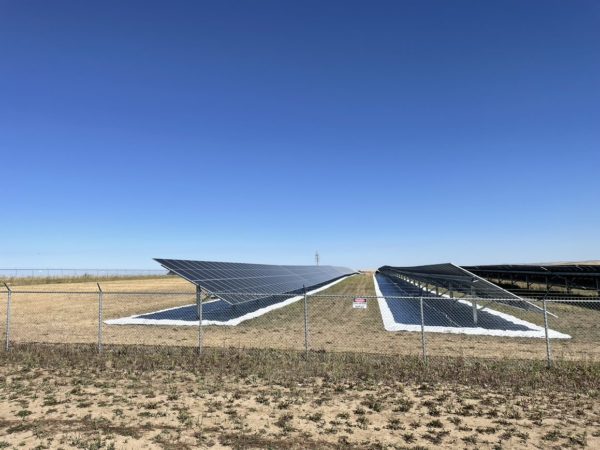Germany-based company Solmax Geosynthetics GmbH, which supplies “geosynthetic drainage geocomposites” has developed a material that reportedly increases the albedo of the surface below a PV power plant by around 70%, allowing more light to reach the rear side of bifacial modules. The material was initially designed for environmental protection by containing chemicals and hazardous waste.
“The increased albedo results in additional irradiance reaching the back of the module,” the company's value engineer EMEA, Douglas Sutherland, told pv magazine. “The amount of irradiance will depend on the geometric characteristics of the plant.”
Called Geolux, the new product consists of a reflective geomembrane made of polyethylene resins and coated with a thin white polyethylene layer that reflects ultraviolet (UV) rays. According to the manufacturer, the material is inert and will not cause any chemical reaction with the ground.
“Geolux can improve the energy yield between 5 to 20% which means an equivalent levelized cost of energy (LCOE) reduction of around 2% to 5%,” Sutherland claims. “In the end, the main limiter for the extra energy benefit is the AC capacity. The question is now whether it is convenient or not to modify the AC capacity. This must be addressed by performing a trade-off between the extra energy generated and the costs associated with the AC capacity increase.”
According to Sutherland, developers could evaluate the impact of the new product at the early stages of project development using the albedo-app function in the PVradar software. “Design parameters such as the AC capacity can be optimized to ensure that the PV plant owners get the most out of the albedo enhancement,” the manufacturer said.
At least two persons are needed to install the membrane and a sharp blade such as a Stanley knife is needed to cut it. Gripple pins are used to ensure the material is held firmly in place.
In terms of total project costs, the new product would mean $0.024/W of additional Capex. “Using our experience on a 500 MW project in the Middle East, accounting for recent inflation, it would cost approximately $12 million for the entire project,” Sutherland said. “It was $8 million two years ago and hopefully prices will drop again in the future.”
Sutherland further notes that the material also prevents weed growth beneath the modules, offering significant O&M savings.

This content is protected by copyright and may not be reused. If you want to cooperate with us and would like to reuse some of our content, please contact: editors@pv-magazine.com.




The real question is what is the life of this product when left in the sun? If it only lasts 2 years it’s kinda pointless
It has a service life of 30+ years and is fully recyclable upon completion of the project.
Looks like a great way to optionally solarize the earth then permit a low crop or cover (while boosting albedo in case you happened to buy bifacial solar.) Seems inane to cover soil with it, roof, mountain, or biocrust not so much.
Same question as above,
What is the life expectancy on such membrane? Does it match the lifespan of the installation itself?
Do you need to pay 0.024 or even higher fee + replacement cost 10 years later? Meaning that you need to provision the cost of this BOS.
Is there any physical studies on the performance and resistance toward harsh environnement? Does it follow IEC61215 standards or any other similar lab test conditions?
Hope to get feedback.
Shiny things get dirty, how this is going to be cleaned and how often needed ?